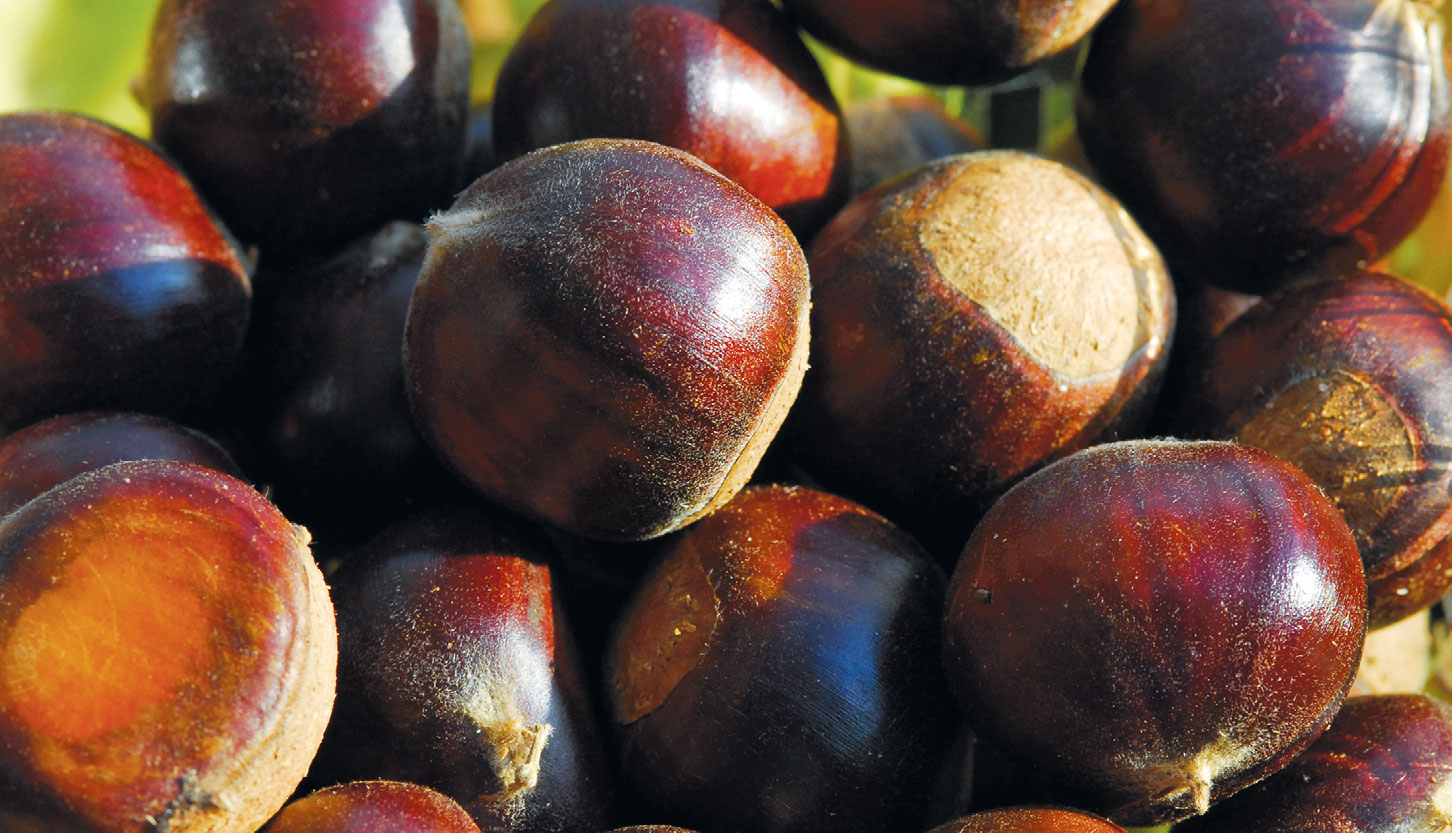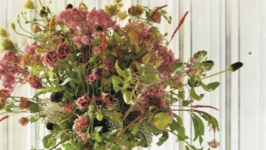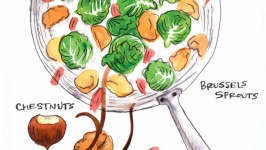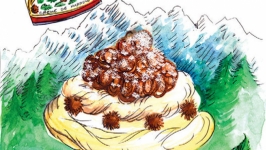Chestnuts
“…do not fit into a category: they have their own special ways…”
The Way to Cook by Julia Child
Chestnuts start arriving in stores in late October to early November, just in time for my birthday. They were a treat when I was younger and, like Winesap apples, signaled that fall was definitely here.
Once a majestic giant in eastern U.S. forests, the American chestnut tree virtually disappeared by the 1950s because of a fungal organism that traveled to the United States from China. Chestnut wood was prized by woodworkers, and its flowers and fruit were an important food source for wildlife. According to Rick Gardner, Chief Botanist at the Ohio Department of Natural Resources, “There are occasional fruiting-size trees in Ohio. We do track fruiting trees, but the trees rarely produce fertile fruit.”
The American Chestnut Foundation (TACF) has spearheaded the efforts to re-establish the American chestnut in its native range, which once extended from southern Maine, across the Ohio Valley, and down to central Alabama and Mississippi. TACF has developed a blight-resistant cultivar that is genetically 94% American chestnut, and is currently working to increase the stock of resistant trees and to educate the public about the virtues of the American chestnut.
Others are working on breeding and trialing disease- and pest-resistant cultivars that can be grown in orchards. This effort is focused on production of a nut crop rather than re-introduction of the tree to our forests. At Rogers Reserve, a farm associated with Michigan State University, the chestnut orchard contains selections that were developed at MSU as well as cultivars developed elsewhere. One cultivar, “Colossal,” is a hybrid that was bred more than 100 years ago.
Which brings us to the chestnut itself. If you decide to harvest your own chestnuts, the first thing you will notice is the painfully spiny, animal-thwarting husk. You will need sturdy gloves to protect your hands as you remove the nuts. There will be one to five or six, depending on the species or hybrid and the growing conditions. The nuts will be shiny brown with a tan base and a tasseled, pointed tip. The reason for this detailed description is that you do not want to confuse the chestnut (genus Castanea) with the horse chestnut or buckeye (genus Aesculus). Horse chestnuts and buckeyes are poisonous and should never be eaten.
One other caution: Chestnuts ripen after they are released from the husk. Like their cousins the oaks, chestnuts are full of tannins as a reproductive strategy. The message to predators is: don’t eat me, bury me until I’m sweet. For our palates, chestnuts need to cure for one to four days to lose much of their astringency and sweeten up. Cooking also reduces the tannins that give chestnuts their bitter taste. You seldom see a recipe that uses raw chestnuts.
Most of the chestnuts sold in the United States are the Spanish or European species. A chestnut is a nutritional gold mine. It contains most of the Bcomplex (folic acid, niacin, B-6, thiamin and riboflavin) vitamins, vitamin C, iron, calcium, magnesium, manganese, phosphorus, zinc, potassium and heart-healthy monounsaturated fats. Being a starchy nut, they are often processed into flour and can be found in gluten-free flour mixes.
But the reason we eat chestnuts is for their sweet and nutty flavor: wonderful by themselves, or as an ingredient in many dishes. In Tuscany the flour is used in polenta and breads, while the nuts can be found in recipes from appetizers to desserts. A special treat is marron glacé—glazed chestnuts. It takes several days to produce this delicious candied treat.
Each of the various species and hybrids has its own flavor profile. Last year I found wild chestnuts at a farmers market that tasted similar to a European chestnut, yet with a winey aftertaste that was not to my liking. These nuts were smaller than those from an American chestnut and it is possible that they were harvested from the shrubby natural hybrid Castanea x neglecta instead.
If you like unusual flavors, seek out chestnut honey. The Asheville Bee Charmer shop in Asheville, North Carolina, offers samples of honeys from around the world, and at their honey bar last June I had my first taste of chestnut honey. The Bee Charmer staff is very enthusiastic about honey, and I have Taylor, one of the knowledgeable staff, to thank for refreshing my memory of that tasting. Imagine the fragrance of wet hay mixed with a small amount of wet animal. Then the taste: wood, tobacco and carob topped off with a bit of bitterness. Needless to say, it is an intense honey and may be an acquired taste for some. Taylor suggests combining chestnut honey with chocolate or drizzling it over a persimmon mousse.
This year my birthday request is going to be: a disease-resistant chestnut, marron glacé and chestnut honey.









